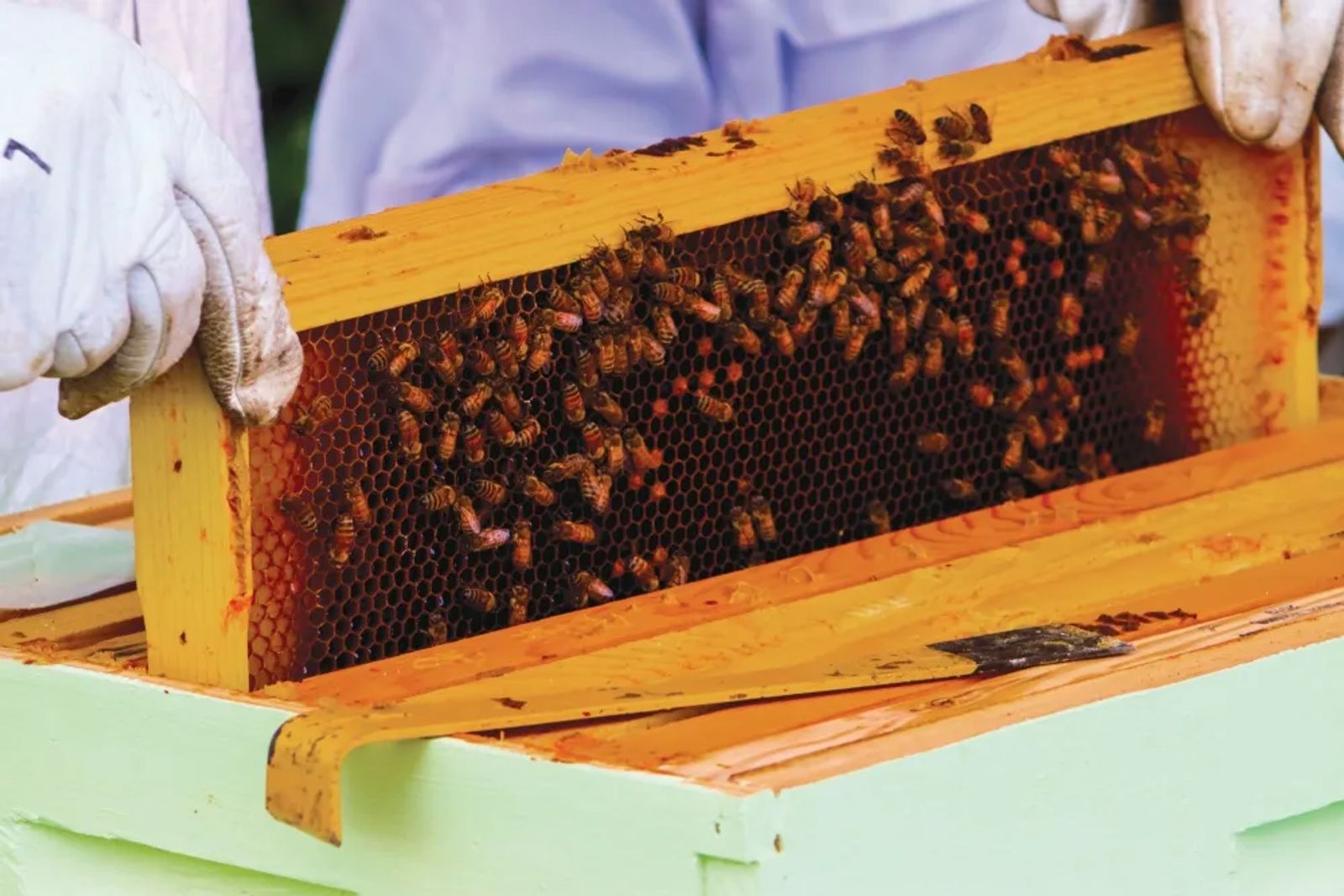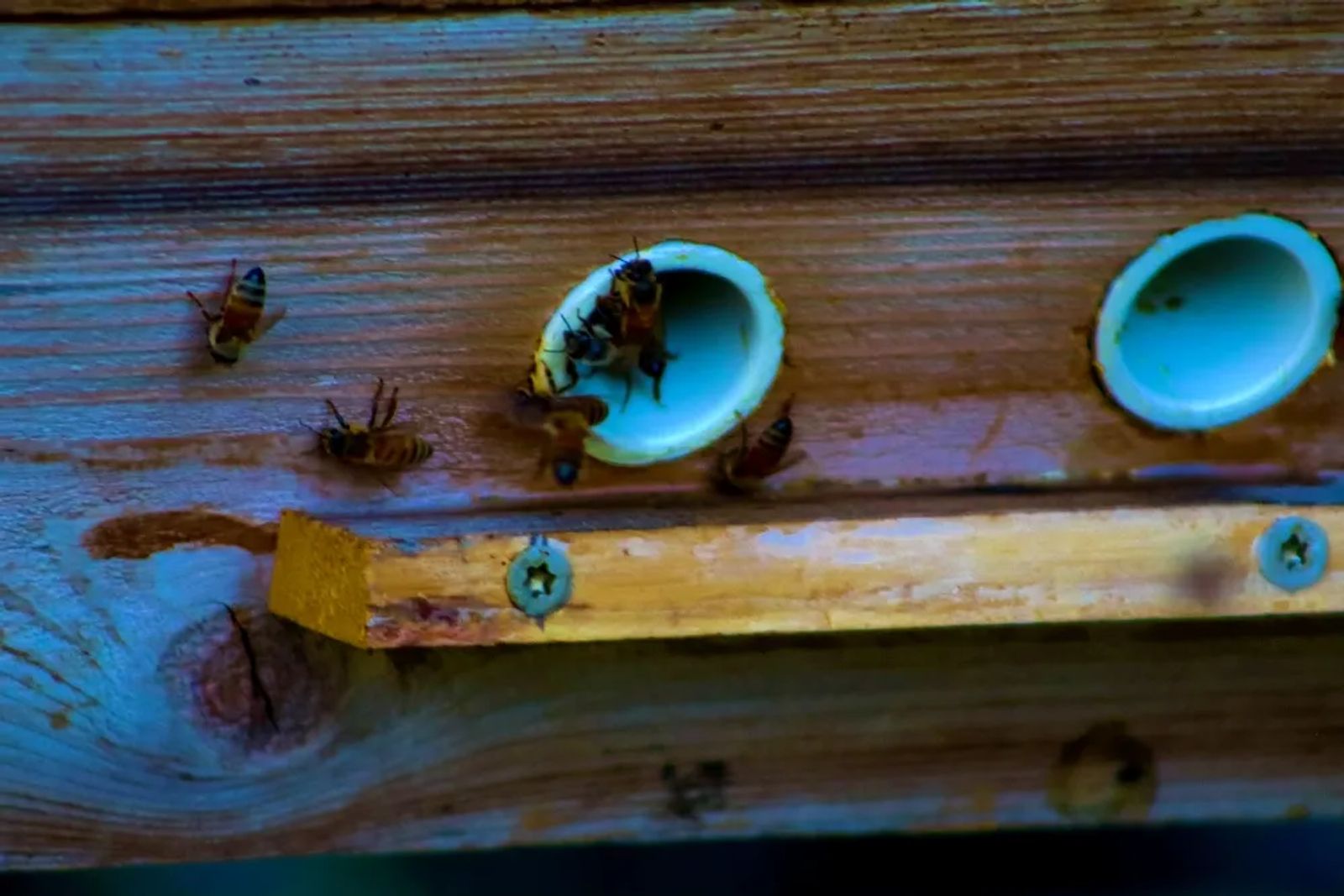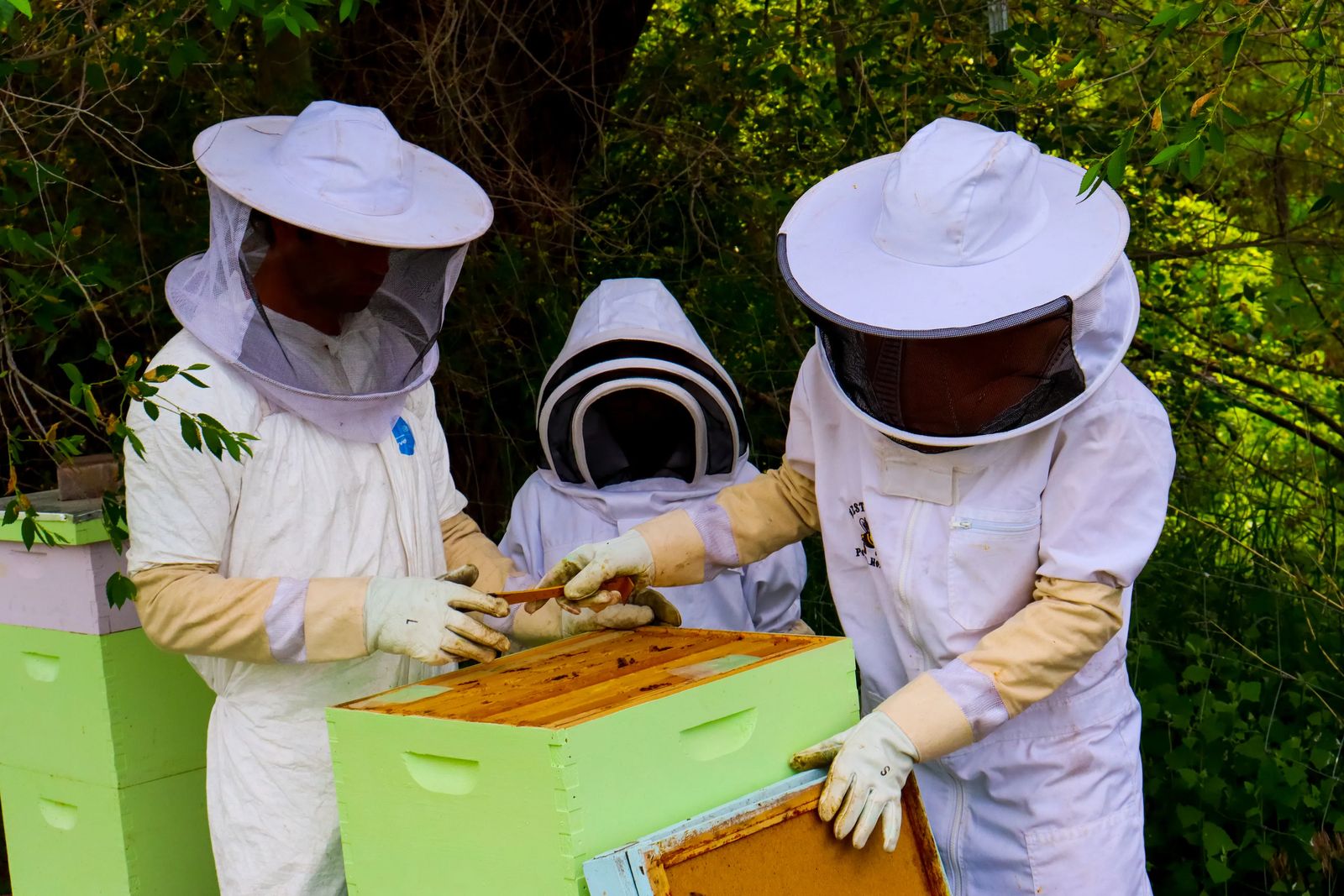
The Buzz on Honeybees
August 2020 | by stephanie hobby, photos by holly netz
The distinctive buzz of a honeybee is a hallmark sound of summer; if you look closely at a flower, you might see them at work, efficiently collecting nectar and pollen. Arguably some of the hardest working creatures on the planet, honeybees’ intelligence and abilities are staggering - and still not totally understood.
Montana consistently ranks in the top five states for honey production, so bees are everywhere. And they are busy. The average bee produces only 1/12th of a teaspoon of honey in its lifetime. For a 16 oz jar, 1,152 bees have had to travel a total of 112,000 miles, visiting 4.5 million flowers.
Jodie Drange, co-owner with her husband Andy of Drange Apiary, says that work ethic starts early. In the summer, bees can only expect to live for about six weeks. Right from the moment they emerge from a honeycomb cell as an adult bee, they have their work cut out for them. For the first two days of life, they are responsible for cleaning the hive and keeping the developing pupas warm. They do this by quickly contracting their muscles, warming their own bodies, and pressing themselves against the developing pupas’ honeycomb cells.
From the third to fifth day, bees shift to feeding older larvae and attending to the queen bee’s needs. At 6 days old until day 11, bees feed larvae and seal the queen’s roughly 1200 to 1800 daily-laid eggs into honeycomb cells. At 12-17 days, the bees help build the comb, add to the hive structure, transport food, and regulate hive temperature and circulate air by flapping their wings - built-in air conditioners!
For the next three days, they transition to guarding the hive entrance. Finally, by the third week of life, they can leave the hive for the first time, venturing out to hunt for nectar and pollen.
Leaving the hive is an amazing undertaking. "They'll do what's called an orientation flight, where bees go outside that hive and hover in front of it until they orient there. They keep moving to GPS them back into that spot," Andy Drange said. As they grow more accustomed to the landscape, they roam farther from home, looking for a high concentration of flowers, where they can get the most bang for their buck.

At this stage, they’re known as scout bees, and these are the ones we see buzzing in and out of flowers. Each one can visit upwards of 1,000 flowers on a single flight. Using a special, straw-like tongue, she unrolls it and pulls nectar into a special pouch, which holds only about a drop of the sweet liquid. When she returns to the hive, she spends about 30 seconds spitting nectar into the mouth of a waiting bee, who takes it to fill cells to make honey. Once that’s done, she announces where she found it with the “bee dance.”
The bee dance is a fascinating phenomenon that intrigued scientists for years before they broke the code. The scout bee literally looks like she's dancing, moving quickly around in a circle or back and forth, letting other scouts know where she found the most recent haul. If she hit a jackpot, she moves enthusiastically, indicating direction and distance with her steps for the watching scouts. If the nectar source wasn't great, she communicates that by a shorter, slower dance. (Hit up YouTube to see a video of this dance.)
"They're so smart. You have a hive of 60 to 80 thousand bees, maybe one to two thousand are drones, the rest are all women working together. They build the comb from glands on their bodies that makes wax, and they know to build the comb in a hexagon shape to get more space. They feed their queen from glands behind their ears that make the royal jelly. It is amazing what they know to do," Jodie said.

Honey collection is happening now; the season starts mid-July and goes through the first part of October. By November, the Drange’s send their hives to potato cellars in Idaho, where the bees relax in the dark and cool temperatures. In January, the hives go to California to pollinate the almond fields. By March, they head to Washington to work in the apple and cherry orchards, and come April, they’re back in Billings, ready to work our gardens and crops.
How you can help
We owe much of our food supply to the industrious work of bees, and there are plenty of ways to show bees some love in your own backyard.
Andrew and Sedley Marble, owners of Billings Nursery and Landscaping, are in their third year of beekeeping. They encourage people to keep a variety of native plants and always have something in bloom. Hybridized plants produce less pollen, so they’re not as ideal.
While a nursery professional can help you find the right plants for your needs, the Marbles offer a guide to building the best honeybee-friendly yard.
For blooms in early spring, you’ll want to have early bloomers like willows and elms, pansies, ornamental almonds, and sand cherries.
By late spring or early summer, milkweed, peonies, phlox, forage grasses, marigolds, and zinnias are in full bloom. Flowering trees include chokecherries and crab apples, and pear and apple trees.
Later in the season, lavenders, echinaceas, prairie coneflower, black-eyed Susans, goldenrod, chives and other members of the onion family, mints, sages, yarrow, butterfly bush, and buckeye trees offer a great source of nectar and pollen for bees.
For fall blooms, you’ll want to have herbs like thyme and oregano, and linden trees.
If you need to treat a tree, Andrew encourages you to do it right after it’s done blooming, so pesticides aren’t sprayed on the flowers, which bees can take back to the hive.
Finally, bees need water, so some advocates advise adding a bee bath to your yard with small stones where bees can rest; make sure to change the water often, as it can be a breeding ground for mosquitoes.
So at the next farmers’ market, when you pick up a jar of honey, take a moment to savor the taste and the incredible work bees do for us.
For more information on beekeeping or just caring for bees in this area, Yellowstone Valley BeeKeepers are on Facebook and offer a wealth of resources.
Originally printed in the August 2020 issue of Simply Local Magazine
Never miss an issue, check out SLM's digital editions here!





